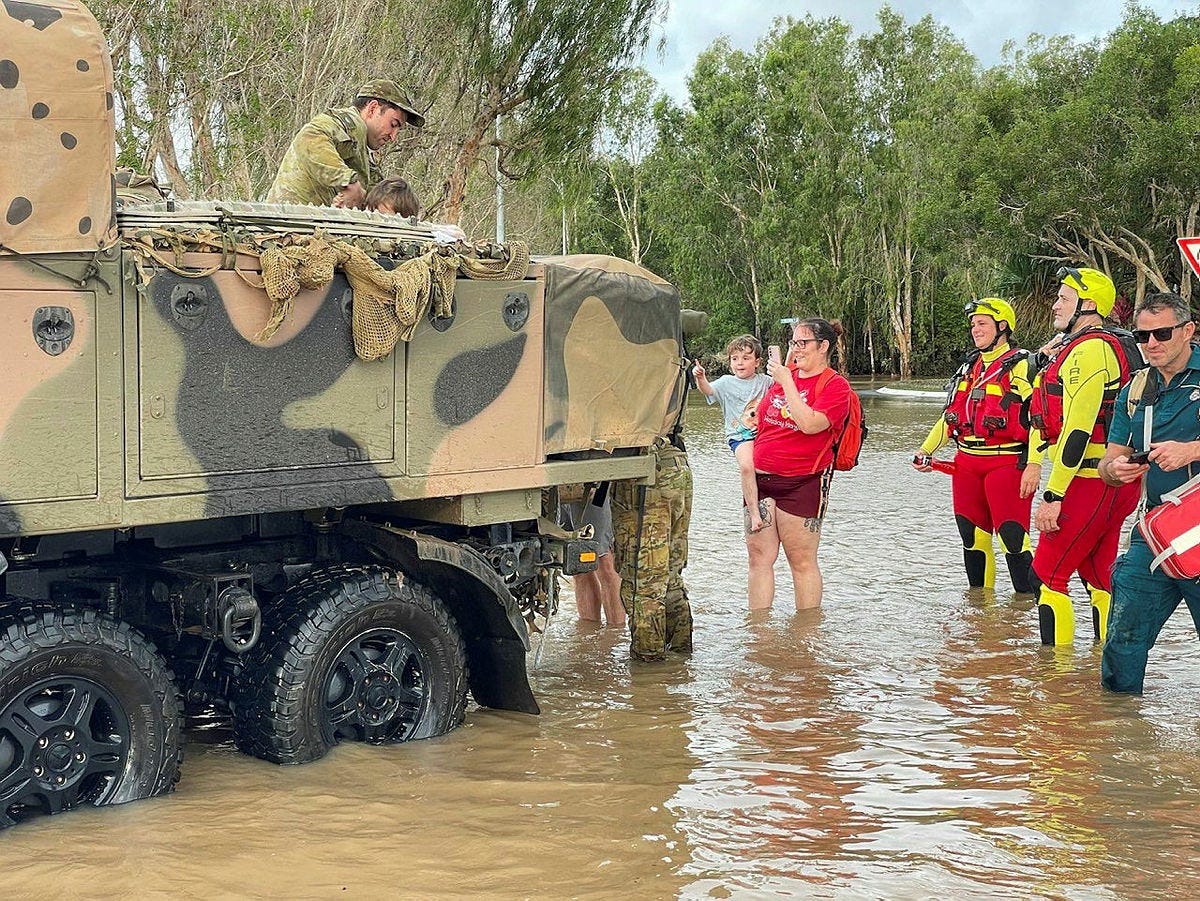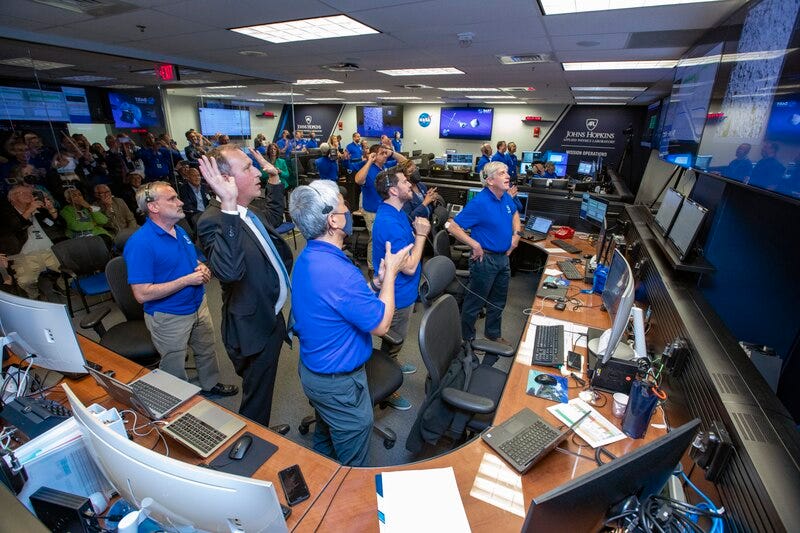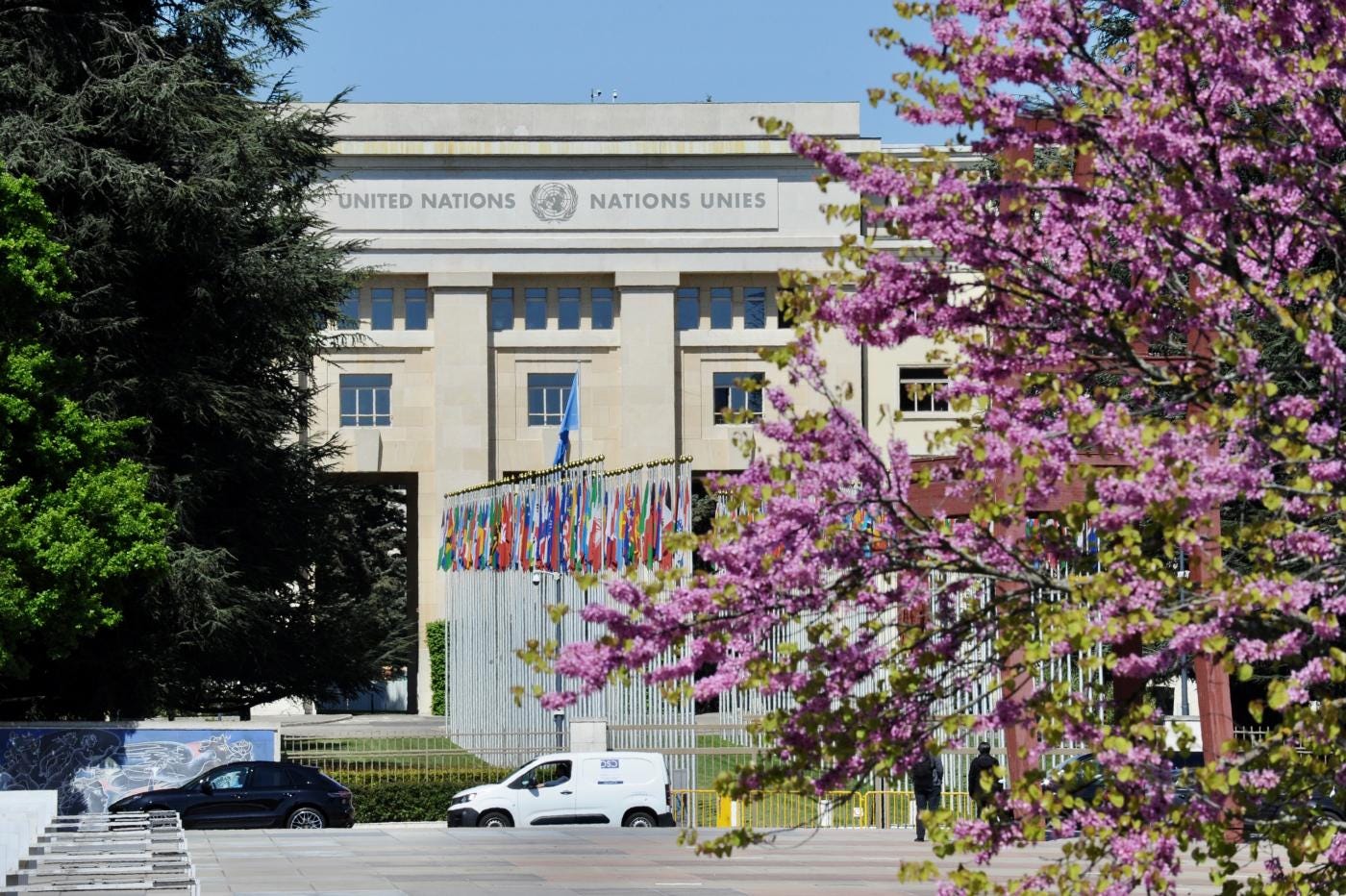Global Shield Briefing (15 February 2024)
An open letter, a future pact, a resilience report and a case study
This regular briefing highlights the latest policy, research and news on global catastrophic risk (GCR).
In this briefing, we draw inspiration from the past to the present, the local to the global, to help chart a way forward. An open letter convened by The Elders and the Future of Life Institute pulls together powerful voices from around the world to call for action on global catastrophic risk. We are proud to have signed. It comes just as the Pact for the Future, a potentially landmark multilateral document, is being negotiated at the United Nations. Then, words must be met with action. Whether that be a nation building its resilience to all manner of risk. Or one country taking leadership to reduce a specific global threat. You just might leave this briefing with a touch more hope.
Calling for leadership to address global catastrophic risk
The Elders, in conjunction with the Future of Life Institute, have released an open letter calling on world leaders to come together to decisively address global catastrophic and existential threats. Founded by Nelson Mandela in 2007, The Elders are a group of leaders, including former presidents, prime ministers and UN secretaries general, who promote leadership on global challenges. Nuclear weapons, pandemics, climate change and conflict are their priority issues. The open letter states: “Our world is in grave danger. We face a set of threats that put all humanity at risk. Our leaders are not responding with the wisdom and urgency required.” It calls on leaders to show the courage to set aside short-term thinking and lead us to that better future.
Global Shield is proud to have been an original signatory of this letter.
As the letter recognizes, a key challenge for policymakers is thinking and acting beyond political cycles. The political demand is, understandably, to deliver on current domestic issues. Especially now, economic and security pressures are narrowing the focus of policymakers to immediate needs. As a result, creeping crises like climate change, rare events like pandemics, and unlikely catastrophes like nuclear war do not receive adequate political or policy attention. Some institutional changes would help. Better horizon-scanning and futures analysis could improve the way governments think about emerging or complex challenges. But, fundamentally, leaders need to develop the political will to manage extreme risk before a crisis hits. We urge like-minded individuals and organizations to sign the letter. Advocates should use the letter to highlight the threats for their respective policy audiences. Coming from a powerful set of global voices like The Elders and the diverse array of other signatories to the letter, national leaders might feel more empowered to take a courageous stance.
Developing the Pact for the Future
On 29 January, the President of the United Nations General Assembly released the ‘zero draft’ of the Pact for the Future. The Pact is intended to be endorsed by heads of government at the Summit of the Future in September. It aims to be a transformational document, setting out a shared member-state vision for the UN and the broader multilateral system. The five focus areas are sustainable development and development financing, international peace and security, science and technology, youth and future generations, and global governance reform. In the second paragraph, the zero draft notes specifically that “humanity faces a range of potentially catastrophic and existential risks”. Nuclear war, climate change and biological agents are called out specifically. The draft also seeks an “Emergency Platform in the event of such a shock that has an impact on multiple regions of the world,” which would include global catastrophes. Member states are currently negotiating revisions to the text in closed-door sessions. A virtual consultation is available to civil society on 21 February.
Policy comment: The Pact for the Future could send a powerful multilateral message on existential and global catastrophic risk. The impact of a document like the Pact is that it highlights and elevates a range of the global governance issues on the minds of Member States. In totality, the Pact could serve as a stepping stone for GCR-related policy and advocacy within the UN. But the scant attention that global catastrophic risk is receiving in the document, and the UN system more broadly, could be easily removed or lessened in the negotiating stage. The Emergency Platform, first proposed by the UN Secretary General, already faces significant resistance. Member States that care about global catastrophic risk should ensure the current language is kept and expanded upon. Advocates should engage through formal and informal processes to ensure it receives attention by the UN and Member States.
Rethinking national resilience for unprecedented times

“Australia’s national resilience has been tested and found wanting over recent years, and there have been mounting calls for a more strategic approach to national resilience,” according to a new report authored by Marc Ablong, a senior official with the Department of Home Affairs and Visiting Senior Fellow with the Australian Strategic Policy Institute. The report argues that growing global challenges requires a fundamental rethink about how Australia manages its vulnerabilities and mitigates strategic risk. Drawing lessons from global practice, it recommends a number of practical actions, including: a national resilience strategy; a national risk assessment; a national preparedness audit; a coordinating office of national resilience; and whole-of-government and whole-of-nation approach to the national defense strategy.
Policy comment: Many of the report’s assessments and recommendations are suitable for other countries and are highly relevant for reducing global catastrophic risk. A national approach to resilience enables societal-level stability, adaptability and cohesion should a catastrophe hit. Several countries around the world – such as in the Nordics and the Baltics – use concepts like total defense or comprehensive security to foster national resilience. And the UK is implementing its National Resilience Framework. These approaches go beyond traditional homeland security or defense capabilities. Resilience also means social cohesion, community-led action, civil defense and individual preparedness. Such mindsets are often built upon decades, even centuries, of existential threats to the nation. The challenge for many other countries is building the mindset proactively. This can only be achieved with purposeful and ongoing public communication, about both the risk the country faces, and the actions individuals and communities must take to manage the risk. National resilience is a collective effort.
Case Study: NASA’s asteroid detection program

As a recurring feature, we include a case study on real-world government efforts on global catastrophic risk. These case studies present opportunities for policy researchers, advocates and practitioners to learn and adapt to their own country contexts.
Asteroid detection is one of the most successful examples of GCR reduction. In 1998, the the US National Aeronautics and Space Administration (NASA) established the Near-Earth Object (NEO) Observations Program, which aimed to identify at least 90 percent of asteroids that were at least 1 kilometer in diameter – approximately the size of an asteroid that may cause an extinction-level impact if it hit Earth. Seven years later, the US Congress set NASA the goal of tracking potentially hazardous objects measuring at least 140 meters in diameter, which is approximately the size that could devastate an entire continent. NASA is currently tracking around 40 percent of the estimated population of roughly 25,000 potential objects. NASA is also developing and testing capabilities to divert an object on a likely collision course with Earth.
Lesson for GCR policy: Perhaps counter to common perception, the release of two Hollywood blockbusters in 1998, Deep Impact and Armageddon, was not the driver behind NASA’s NEO program. Momentum had been building since around 1990. Through the decade, scientific research into asteroids and unprecedented observations of near-Earth objects in our Solar System brought attention and rigor to the issue. This momentum culminated initially with Congress tasking NASA in 1994 to develop a plan for asteroid detection, smoothing the path for the 1998 Congressional directive to establish a dedicated program.
This case demonstrates that policy windows must first be opened. For risk-related policy, scientific evidence, pop culture or real-world observations can bring rare but focused attention. It is, therefore, incumbent on champions – both inside and outside government – to capitalize on these windows. When the risk is unlikely or infrequent, it could take years or even decades between policy windows that allow for sufficient political will to fundamentally change governance.
This case study also demonstrates the benefit of starting small. The Planetary Defence Program started with a budget of around $4m a year, a minuscule proportion of the $14bn budget NASA had at that time and a minor increase from the roughly $1.5 million a year NASA was previously spending on NEO search. And the first goal – identifying 90 percent of extinction-level objects – was relatively achievable. The program was able to build experience and credibility for future expansion.



Great to see a document like Pact for the future, hope to see action as well!